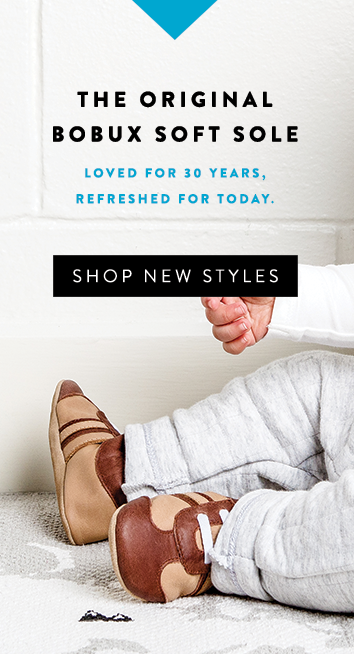This website requires cookies to provide all of its features. For more information on what data is contained in the cookies, please see our Privacy Policy.
hello!
or
Stay here

A baby's foot is quite unique in how it is shaped. During infancy, your child's foot will change dramatically over the first 18 to 24 months of their lives. Because of this fast-paced development, you will need to be very diligent in choosing their shoes. The wrong type or size of a shoe can restrict the movement of their feet and restrict the natural development of their feet. Baby shoes for walking can be introduced slowly but you will still need to ensure that their feet have an opportunity to grow as they should.
The Nature of a Baby's Foot
A baby's foot is very different than that of an adult or even a slightly older child. Their foot has little to no arch and is round over the top of the foot and around the heel. During the first few months of life, a baby's foot is not designed to be walked on. It is not strong enough to support any weight and its rounded shape offers very little stability. As the foot begins to develop, the baby's constant stretching and pushing work to strengthen both the soft tissues as well as the connective tissues and bones.
Durable, Flexible, Lightweight
Shoes that have been designed for this stage of development should have three important characteristics - durable, lightweight and extremely flexible. As a baby becomes more mobile, they begin to use their feet to push off with. Baby shoes for walking should be made with durable materials that can withstand being slid across the floor or used to push off against various surfaces. Lightweight materials ensure that the child can move their feet without having to drag around a lot of excess weight that could make them uncomfortable. Another key factor is flexibility. In order for a child's foot to develop as it should, the shoes they wear must allow them to have as much flexibility as possible without restricting their movement in any way.

Making the Transition from Crawling to Walking
From birth through the first two years of their lives, a baby's foot will develop very quickly. These dramatic changes will require frequent shoe replacement, especially when they transition from crawling to walking. As they crawl, the sides of their shoes will experience much more wear and tear. When they finally begin to walk, the soles will have to provide both stability and traction. At the same time, the baby shoes for walking are providing stability, they must also be flexible enough to allow for as much movement as possible when it comes to the toes and the ankle. As their feet continue to grow, these factors will have to be adjusted to maintain that freedom of movement.
At Bobux, all of our baby shoes for walking are designed using recommendations by podiatrists who specialize in the development of children's feet. By following their advice, we are able to manufacture shoes that meet the needs of your child's ever-changing feet. We recommend taking a close look at the Bobux Xplorer series. This particular collection is designed with the mobile child in mind, especially those who are transitioning from crawling to walking.





















